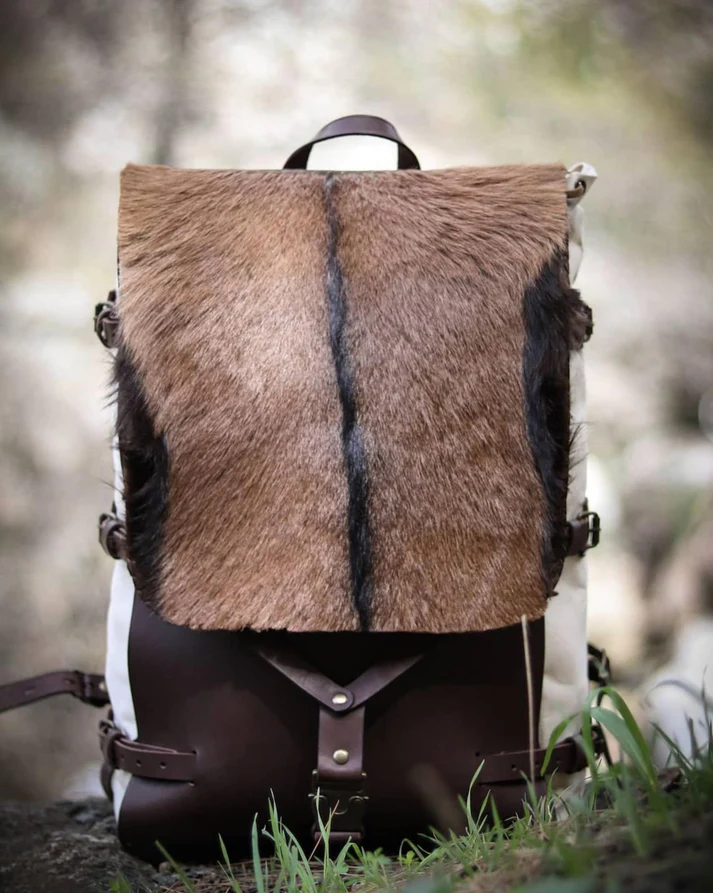The Importance of Durability in a Bushcraft Backpack
When venturing into the wilderness, the reliability of your gear can make all the difference between a successful adventure and a difficult struggle. Among the most important pieces of outdoor equipment is your backpack. Unlike casual daypacks or lightweight travel bags, a bushcraft backpack is expected to endure harsh conditions, carry heavy loads, and provide dependable storage over long periods. For this reason, durability becomes the defining characteristic of a high-quality bushcraft pack.
Why Durability Defines a Bushcraft Backpack
A Buschcraft backpack is not just a container for carrying gear—it’s the foundation of survival preparedness. In rugged environments where weather, terrain, and unexpected challenges constantly test your equipment, a durable backpack ensures that tools, food, and supplies remain safe and accessible. Weak materials, poor stitching, or flimsy zippers can fail when you need them most, making durability not just a feature but a necessity.
Materials That Enhance Longevity
One of the first aspects to examine when considering durability is the material used. Traditional bushcraft backpacks are often made from:
- Waxed Canvas – Known for its water resistance and rugged quality, waxed canvas becomes tougher with age while maintaining flexibility.
- Leather Reinforcements – Leather straps and trims add strength to high-stress areas, reducing the chance of wear and tear.
- Heavy-Duty Stitching – Reinforced seams prevent tearing under heavy loads, ensuring that the pack lasts for years.
Unlike synthetic ultralight hiking packs that may sacrifice strength for weight savings, bushcraft backpacks prioritize resilience to withstand rough handling.
Weather Resistance in the Wild
Durability isn’t just about strength—it’s also about protection from the elements. Outdoor conditions can shift rapidly, from heavy rain to freezing winds. A durable bushcraft backpack shields your essential gear from moisture, dirt, and environmental wear. Water-resistant fabrics like waxed canvas, along with storm flaps over zippers, help ensure that supplies such as food, fire-starting kits, and clothing remain dry and usable.
Load-Bearing Strength
Bushcraft often requires carrying more gear than recreational hiking. From cutting tools and cooking equipment to shelter materials and food supplies, the weight can quickly add up. A durable backpack is designed with reinforced straps, padded shoulders, and strong frames or support systems to handle these heavier loads without breaking down. Weak straps or buckles could fail under stress, leaving you unable to transport essential gear.
Reliability in Extended Use
Unlike weekend hiking trips, bushcrafting can mean days or weeks in the wild. Durability here is not about short-term performance but about sustained reliability. A high-quality bushcraft backpack maintains structural integrity even after repeated exposure to rugged trails, wet environments, and constant use. This makes it a trusted companion for survival training, long-term expeditions, or emergency preparedness.
The Role of Durability in Safety
A durable backpack indirectly contributes to personal safety. When your pack withstands harsh conditions, it protects the survival tools inside—such as knives, fire kits, and first aid supplies. If the bag were to tear, leak, or break under strain, your ability to survive in the wilderness could be compromised. Durability ensures that these life-saving resources remain intact and accessible, no matter the conditions.
Cost vs. Longevity
While durable bushcraft backpacks may require a higher initial investment, their longevity often makes them more cost-effective in the long run. A cheaply made pack may wear out quickly, forcing frequent replacements and possibly failing in critical moments. On the other hand, a well-crafted, durable backpack can serve for many years, standing up to multiple expeditions without compromising its performance.
Key Features That Indicate Durability
When evaluating the durability of a bushcraft backpack, certain features stand out:
- Reinforced Base – Prevents wear from setting the pack down on rough surfaces.
- Metal Hardware – Buckles and clips made of metal are stronger and more dependable than plastic alternatives.
- Double or Triple Stitching – Reduces the risk of seam failures under pressure.
- Thick Padding – Provides comfort for carrying heavy loads over long distances.
These design choices collectively ensure that the backpack withstands both time and terrain.
Practical Durability in Action
Consider a scenario where you’re trekking through dense forest, carrying a saw, hatchet, tarp, food supplies, and cooking equipment. Every time you crouch, climb, or rest your pack on rough ground, the material and stitching are tested. A durable bushcraft backpack won’t fray, split, or compromise its structure in these situations. Instead, it supports your journey and adapts to the challenges of the natural environment.
Balancing Weight and Strength
While durability is essential, it’s also important to find a balance. A backpack that is overly heavy due to thick materials or metal reinforcements can become burdensome. The best bushcraft backpacks achieve a balance between toughness and practicality, offering protection and strength without unnecessary weight.
Final Thoughts
Durability is the backbone of any bushcraft backpack. It’s not just about how much gear you can carry, but whether your pack can protect and support you through unpredictable wilderness challenges. From resisting harsh weather to withstanding constant use and heavy loads, a durable backpack is a survivalist’s most reliable ally.
Choosing a strong, well-built bushcraft backpack ensures that your outdoor adventures remain safe, efficient, and enjoyable. In the wilderness, where every piece of gear matters, durability isn’t just important—it’s essential.







